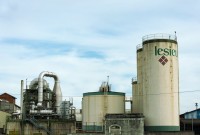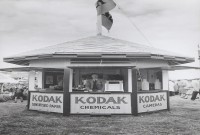- Home
- Business Processes
- Industry Knowledge
- Aerospace Industry
- Automotive Industry
- Banking Domain
- BFSI Industry
- Consumer/ FMCG Industry
- Chemicals Industry
- Engineering & Construction
- Energy Industry
- Education Domain
- Finance Domain
- Hospitality Domain
- Healthcare Industry
- Insurance Domain
- Retail Industry
- Travel and Tourism Domain
- Telecom Industry
- Leadership Skills
- eLearning
- Home
- Domain Knowledge
- Chemicals Industry
- Sectors of Chemical Industry
Sectors of Chemical Industry
Fundamentally, the chemicals industry can be divided into two sectors; commodity/basic chemicals and specialty chemicals. Commodity chemicals are manufactured by many different companies however the end product is generally the same with very little variations. There exist other segmentations for this industry as well. Understand the main sectors of the chemical domain.
Sales of the chemical business can be divided into the following broad categories/sectors:
- Basic or Commodity Chemicals - Approximately 35 to 37 percent of the dollar output
- Life Sciences- Approximately 30 percent of the dollar output
- Specialty Chemicals - Approximately 20 to 25 percent of the dollar output
- Consumer Products- Approximately 10 percent of the dollar output
Basic Classification of Chemical Industry Sectors:
Fundamentally, the chemicals industry can be divided into two sectors; commodity/basic chemicals and specialty chemicals. Commodity chemicals are manufactured by many different companies however the end product is generally the same with very little variations. Specialty chemicals are typically made to suit the needs of a specific customer and are generally only available from a few suppliers. These chemicals are often protected by patents.
Basic/Commodity Chemicals:
They are also called basic chemicals, are typically inexpensive and include polymers, bulk petrochemicals, basic industrial chemicals, inorganic chemicals, and fertilizers. Polymers make up the largest segment of this sector. Commodity chemicals are generally made in large volumes.
Specialty Chemicals:
They are also called fine chemicals; include industrial gases, adhesives, sealants, industrial cleaning chemicals, coatings, and electronic chemicals. A Specialty Chemical is a chemical produced for specialized use. They are produced in lower volume than bulk chemicals, of which petrochemicals, made from oil feedstock, are the most common. However, both are produced in a chemical plant. Some examples of specialty chemicals are adhesives, additives, antioxidants, corrosion inhibitors, cutting fluids, dyes, lubricants, pigments, etc. These chemicals are generally more expensive than commodity chemicals. Chemicals are made from elements and every element has a unique set of physical and chemical properties. Specialty chemists understand how to combine certain elements that result in a chemical with the required properties.
Advanced Classification of Sectors of Chemical Industry:
Further classification of the chemicals industry can be done to separate Life Science Chemicals, Science and Technology Chemicals, and Commodity Chemicals. The definition of these two sectors is provided below:
Life Science Chemicals:
These are differentiated biological and chemical substances used to induce specific outcomes in humans, animals, plants, and other life forms. The major products of this segment include agrochemicals, pharmaceuticals, and biotechnology products. Life sciences (about 30 percent of the dollar output of the chemistry business) include differentiated chemical and biological substances, pharmaceuticals, diagnostics, animal health products, vitamins, and pesticides. Life science products are usually produced with very high specifications and are closely scrutinized by government agencies such as the Food and Drug Administration. Pesticides, also called "crop protection chemicals", are about 10 percent of this category and include herbicides, insecticides, and fungicides.
Science and Technology Chemicals:
These products include advanced materials that transform current technologies. They enhance the characteristics of traditional specialty chemical products, as listed above.
Consumer Products:
Consumer products include direct product sale of chemicals such as soaps, detergents, and cosmetics. Typical growth rates are 0.8 to 1.0 times GDP. They include sulfuric acid, nitrogen, ethylene, oxygen, lime, ammonia, propylene, polyethylene, chlorine, and phosphoric acid.
Sub-Segments of Chemicals Industry:
Given below are some of the sub-segments of the chemicals industry. They help the learner to understand the various sub-classifications as well as key products and manufacturing operations in the chemicals domain:
- Chemical Wholesaling Industry
- Organic Chemicals Industry
- Inorganic Chemicals Industry
- Fertilizer Manufacturing Industry
- Pesticide Manufacturing Industry
- Soap & Cleaning Compound Manufacturing Industry
- Chemical Product Manufacturing Industry
- Dye & Pigment Manufacturing Industry
- Generic Pharmaceutical Manufacturing Industry
Chemical Wholesaling Industry:
As a key intermediary within the supply chain, the Chemical Wholesaling industry plays an important role in overall chemical manufacturing. Because chemical wholesalers have diversified product offerings, no operator holds a dominant share of the market. As a result, this industry is highly competitive, with wholesalers competing on storage efficiency and distribution. This industry wholesales chemicals and related products, including compressed gas, chemical additives, and synthetic rubber, to the manufacturing, construction, and mining industries. This industry does not wholesale agricultural and medicinal chemicals, paints and varnishes, fireworks, or plastics materials. Major industry products are detergents and soaps, alkalies and chlorine, industrial gases, adhesives, sealants and glues, sanitation chemicals, polishes and waxes, synthetic rubber, dyes, and pigments.
Organic Chemicals Industry:
The organic chemicals industry is one of the most significant sectors of the chemical industry. It plays a vital developmental role by providing chemicals and intermediates as inputs to other sectors of the industry like paints, adhesives, pharmaceuticals, dyestuffs and intermediates, leather chemicals, pesticides, etc. Methanol, acetic acid, formaldehyde, pyridines, phenol, alkyl amines, ethyl acetate, and acetic anhydride are the major organic chemicals produced. Formaldehyde and acetic acid are important methanol derivatives and are used in numerous industrial applications. Phenol is an aromatic compound and derived from cumene, benzene, and propylene derivatives. Alkylamines are used in the manufacture of surfactants. Pyridine derivatives are used in the manufacture of pharmaceuticals. Ethyl acetate is the ester of ethanol and acetic acid and is manufactured for use as a solvent. Acetic anhydride is widely used as a reagent. Natural gas/ naphtha are mainly used as feedstock for the manufacture of these organic chemicals. Alcohol is also an important feedstock for the industry, with the sizable production of acetic acid and the entire production of ethyl acetate being based on alcohol. The global production of organic chemicals was around 400 million tons during 2010-11. Major producers of organic chemicals are the USA, Germany, U.K, Japan, China, and India. Few Latin American countries, for example, Brazil and Chile are increasing their presence in the global organic chemicals market.
Inorganic Chemicals Industry:
This industry manufactures a variety of basic inorganic chemicals. Inorganic chemicals are generally mineral-based. Most organic chemicals, on the other hand, are carbon-based. Inorganic chemicals are used as inputs in a number of manufacturing and industrial processes. Key identifiable industry segments include Chlor-alkali and carbon black products. Major industry products are Chlorine, Caustic soda, Potassium, sodium, and other alkali compounds, Chemical catalysts, Inorganic acids, Carbon black, and Other inorganic chemicals.
Fertilizer Manufacturing Industry:
This industry primarily manufactures fertilizer products. These products contain a different mixture of the three vital nutrients essential for plant growth: nitrogen, phosphorous, and potassium. The products are distributed via wholesale arrangements with third parties or, in the case of vertically integrated operations, by the manufacturer. Major industry products are phosphate fertilizers, nitrogenous fertilizers, and mixed fertilizers. The major activities include manufacturing ammonia, ammonium nitrate, ammonium sulfate, and ammonium phosphates, natural organic and animal waste or sewage origin fertilizers, nitric acid and phosphoric acid, nitrogenous fertilizer materials, urea, phosphatic fertilizer materials, potting soil, plant foods, and compost, etc.
Pesticide Manufacturing Industry:
This industry formulates and prepares agricultural and household pest control chemicals. Key products include pesticides (herbicides, insecticides, and fungicides) and agricultural chemical products (insect repellents, sheep dips, fly sprays, and flea powders). Key markets for this industry include the agricultural sector, households, and various commercial and industrial users.
Soap & Cleaning Compound Manufacturing Industry:
This industry produces substances that loosen and remove soil from a surface for personal hygiene, sanitization or cleaning clothes, linens, and furnishings. The industry does not include manufacturers of synthetic glycerin, industrial bleaches, or shampoos. Major industry products include household soaps and detergents, commercial soaps and detergents, polishes, and other sanitation goods and surface-active agents.
Chemical Product Manufacturing Industry:
This industry manufactures a diverse range of chemical products. Key product groups include custom compounding plastic resins and manufacturing toners, toner cartridges, photographic chemicals and sensitized photographic film, paper, and plates. Custom compounding of plastic resins includes custom mixing and blending of purchased plastic resins and reformulating plastic resins from recycled plastic products. Major industry products include custom compounding of resins, photographic chemicals and materials, and other related products and preparations.
Dye & Pigment Manufacturing Industry:
This industry manufactures synthetic organic and inorganic dyes and pigments, such as lakes and toners (except electrostatic and photographic). As such, the industry produces various pigments and dyes, including color, lead, chrome, metallic and zinc-based pigments as well as disperse, vat, and direct dyes. A chemical intermediate product, these pigments, and dyes are used to impart color to numerous products. Major industry products include inorganic dyes and pigments and synthetic organic dyes and pigments.
Generic Pharmaceutical Manufacturing Industry:
Generic pharmaceutical and medicine manufacturers develop prescription and over-the-counter drug products that are used to prevent or treat illnesses in humans or animals. Generic drugs are produced and distributed without patent protection, and industry operators are not significantly engaged in the research and development of new drugs. The industry does not include manufacturers of nutritional supplements or cosmetic beauty products. Major products include pharmaceutical preparations for metabolic drugs, cardiovascular drugs, central nervous system drugs, psychotherapeutic drugs, and other drugs. It includes medicinal and botanical products, in-vitro diagnostic substance products, and biological products (except diagnostic). The main activities of this industry are to develop and produce drugs, market and distribute them after gaining regulatory approval for respective drugs. Generic firms can be smaller because the cost of research and development is significantly lower than it is in the brand name industry. Economies of scale exist when increasing the size of a company increases its productivity.
Related Links
You May Also Like
-
Overview of Chemicals Industry
The chemical industry is critical for the economic development of any country, providing products, and enabling technical solutions in virtually all sectors of the economy. This article provides an overview of the chemical industry, explaining the definition and processes in the chemical domain. Read about the various segments of the chemical industry and what they do. A brief discussion on the major players in the chemical domain and their impact on the global and US economy.
-
Business Model & Value Chain of Chemicals Industry
Understand the three critical business models applied by the Chemicals Industry to create value for its customers; asset-driven business model, integrated business model, and specialties business model. This article also explains the chemical industry value chain and provides some practical examples for a better understanding.
-
Importance / Impact of Chemicals Industry
Chemical Industry is engaged in the development, optimization, and monitoring of fundamental chemical processes used in industry for transforming raw materials and precursors into useful commercial products for society. Learn more about the importance and impact of the chemical industry on agriculture, environment, hygiene, food, painting, etc.
-
Chemicals Industry’s Supply Chain
This article explains the chemical industry supply chain and addresses key questions like the importance of supply chain management and why the chemicals industry needs to focus on supply chain management. Understand the key factors influencing the supply chain for the chemicals industry and strategies to overcome the current challenges.
-
This article provides a concise history of the chemicals industry. How the chemical industry progressed and changed over time. Explore the journey of the Chemical industry from the early ages to the twenty-first century. Chemicals have been manufactured for thousands of years. The history of the chemicals industry can be traced back to ancient times when alkali and limestone were combined to make glass, and sulfur and saltpeter became an explosive that is similar to modern gunpowder.
-
Industry trends are examined to make predictions. This article discusses the trends in the chemicals industry including trends related to consumer behavior, employment, technological advancements, new product development, competition, government norms, and other factors that impact the industry.
-
Fundamentally, the chemicals industry can be divided into two sectors; commodity/basic chemicals and specialty chemicals. Commodity chemicals are manufactured by many different companies however the end product is generally the same with very little variations. There exist other segmentations for this industry as well. Understand the main sectors of the chemical domain.
Explore Our Free Training Articles or
Sign Up to Start With Our eLearning Courses

About Us
Learning
© 2023 TechnoFunc, All Rights Reserved







